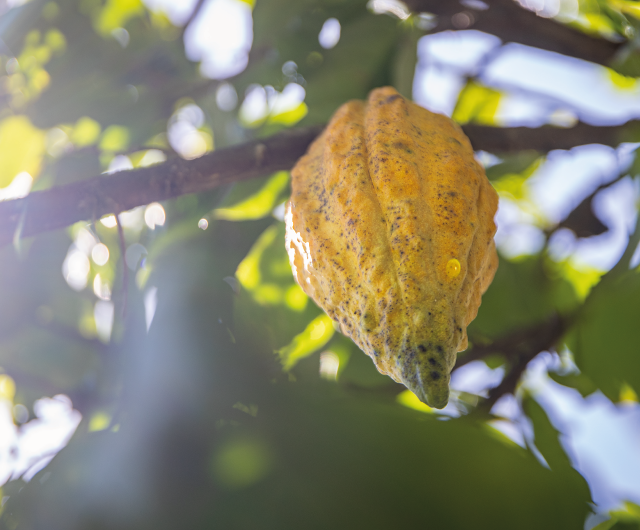
The great comeback of Salvadoran cacao
Amid volcanoes, storms and conflict, Salvadoran cacao is making a comeback.
A short history of cacao in El Salvador
Cacao and chocolate are an integral part of El Salvador's history, dating back to its very beginnings. Already present in Mayan mythology in pre-Hispanic times, cacao was not only consumed, it was domesticated. 3000 years ago, cacao was used in the preparation of beverages consumed during traditional rituals, but it was also used as a currency of exchange. This historical fact reinforces the importance of cacao in Salvadoran culture.
El Salvador has never been a benchmark for mass production, its size and geography having made the volcano highlands more suitable for other crops, such as coffee. It is one of the smallest countries in the Americas, with a surface area of just 21,041 km², but it is undoubtedly an origin to be taken seriously when considering the future of specialty cacao.
In 1575, historical records show that 1420 tonnes of cacao were exported from El Salvador to Mexico and then from Mexico to Spain. Even if current projections materialize, it will take several years to recover the volume of the past.
By 2022, according to the Salvadoran Ministry of Agriculture, cacao production will be concentrated mainly in two regions: Sonsonate and Usulután. However, the entire Pacific coastal zone has great potential, and cacao cultivation is once again expanding there, despite adverse factors such as climate change and sometimes complex social situations.
Water, an indispensable resource
While Central America is one of the most water-abundant regions in the world (with 23,000 m3 per inhabitant/year), it is facing problems of water availability and quality. It is therefore vital to protect the water recharge zones, which are usually located in the upper reaches of volcanoes.
The low-lying plateaus, on the other hand, are devoted to conventional agriculture, such as sugarcane monoculture, livestock farming and the constant development of urban areas, which are also one of the main vectors of water stress. Cacao requires a lot of moisture and can therefore rely on irrigation systems during the dry seasons (i.e. 6 months a year in El Salvador).
Agroforestry cultivation offers a wide range of environmental benefits. For example, it ensures soil fertility, protects crops from wind and sun, restores degraded land and improves water conservation.
The cacao we source helps to protect biodiversity and water sources, thanks to the agroforestry systems in which it is produced.
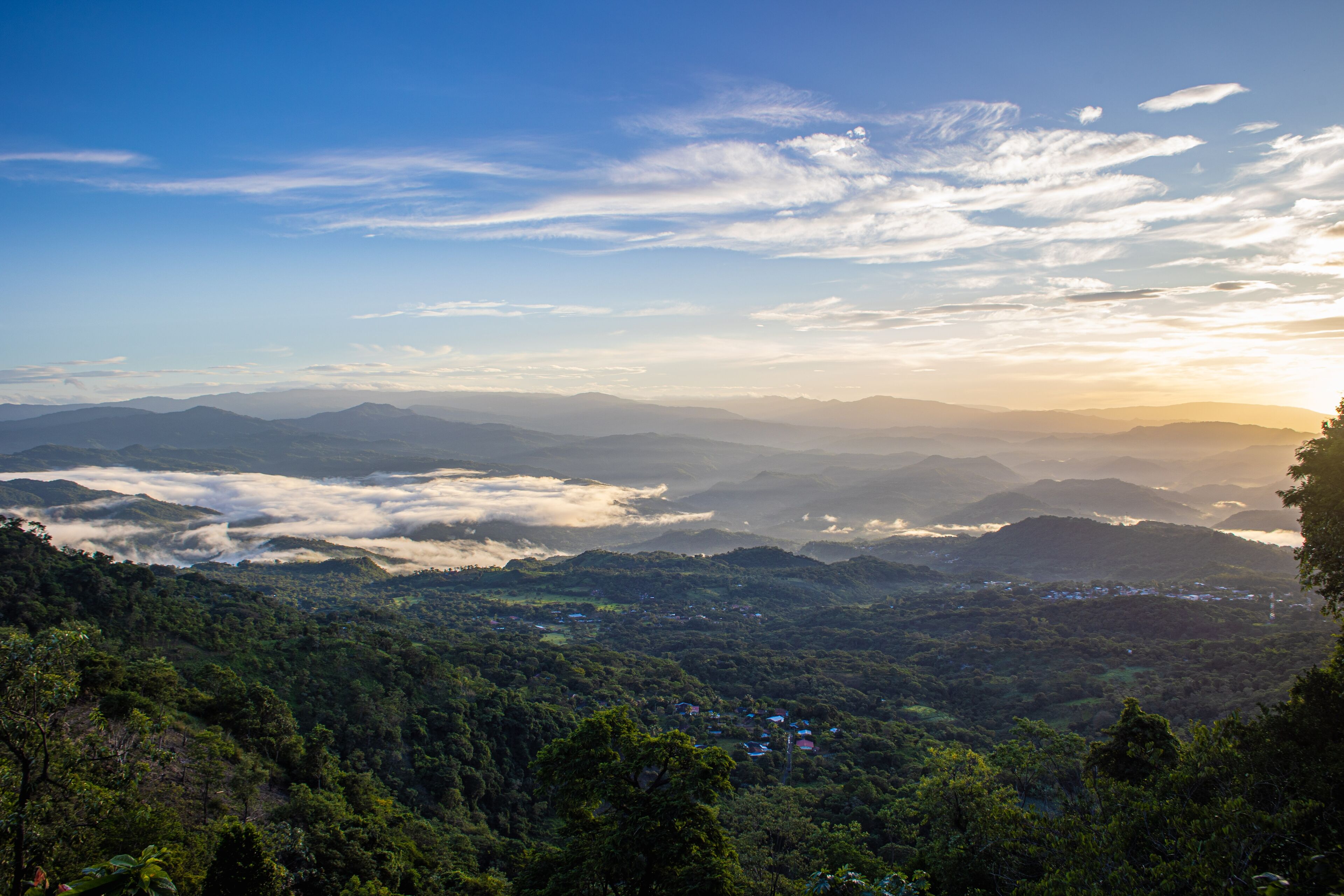
Here in Morazàn, it's easy to see the difference (especially during the rainy season) between the deceptive green of the sugar cane fields and cattle pastures, contrasting with the lush tropical forests that provide ideal conditions for growing cacao.
According to "Alianza Cacao" (an NGO that supports cacao farmers by providing them with professional support in production and marketing), El Salvador produced around 200 tonnes of cacao in 2020, then 500 tonnes in 2021. By the end of 2022, production is estimated at 900 tonnes of dry cacao and 1,500 tonnes in 2024.
This development is designed to meet the growing demand of the local market, and these production increase forecasts correspond, firstly, to good farm management and, secondly, to the productive age at which the youngest crops are arriving.
However, we must remain cautious with these forecasts, as the accessibility of imported cacao prices will remain a parameter that Salvadoran cacao farmers must take into account in their finances.
Strong dependence on Nicaraguan cacao
To satisfy its domestic demand of around 1,200 tonnes a year, El Salvador has to rely on Nicaragua and Honduras to supply it with beans for the manufacture of "tablillas". It is estimated that 80% of the cacao consumed in El Salvador comes from Nicaragua.
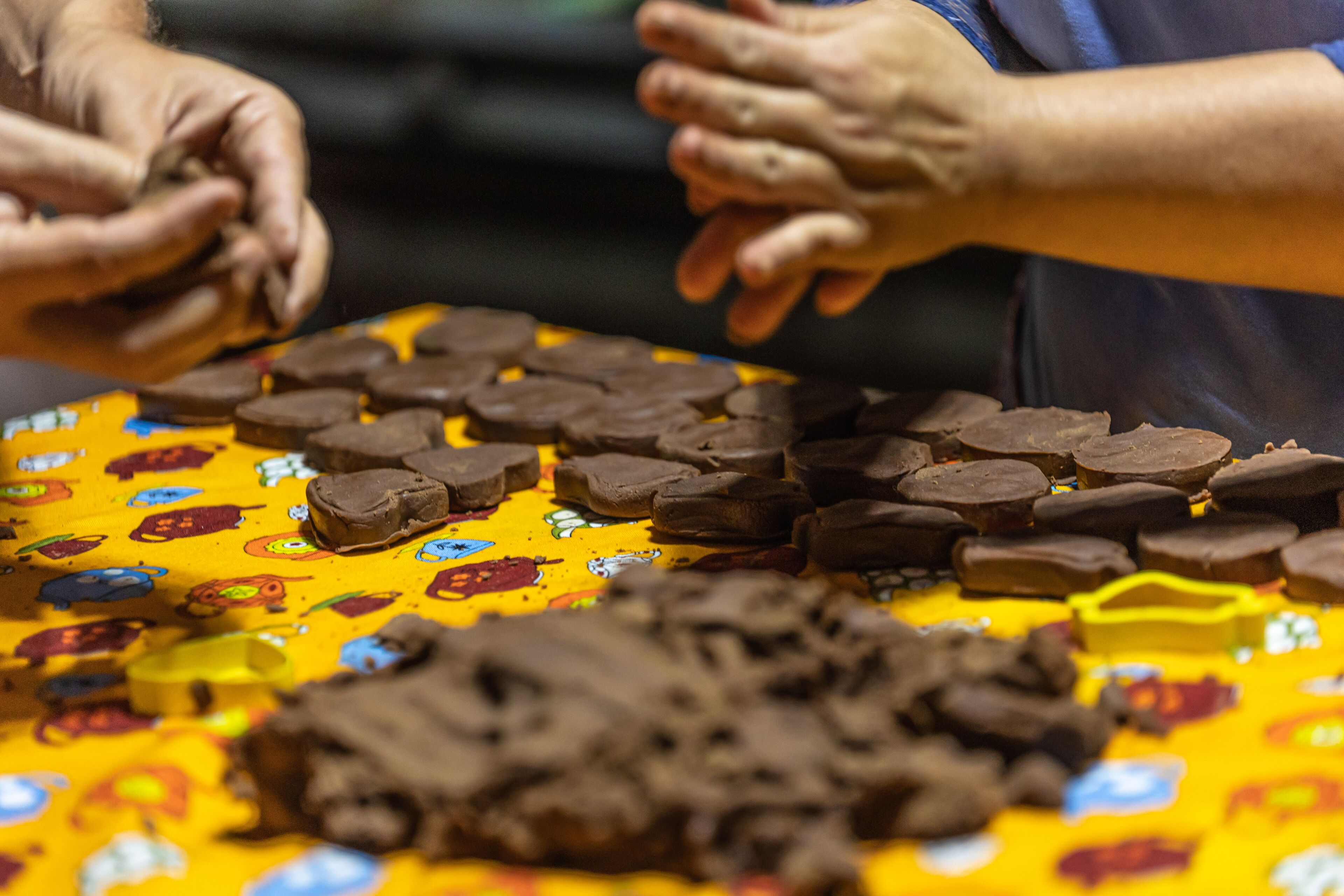
Tablillas are chocolate cakes made with 70% sugar, 29% cacao and 1% spices such as cinnamon, cloves and green pepper. They are then diluted in water to become a gourmet drink that Salvadorans love.
Thanks to subsidies, subsidized loans and, let's face it, lower farm wages, cacao production in Nicaragua is cheaper overall.
Consumption of Nicaraguan cacao is so high in El Salvador that it affects both the market and quality, forcing local producers to adapt.
There is very little quality control on the Nicaraguan cacao that goes into the tablilla factories in El Salvador. For example, let's go back to a finca. After selective harvesting of the pods, one of the most important post-harvest parameters for guaranteeing cacao quality is fermentation of the beans. This complex process lasts around 6 days, during which the beans ferment in wooden crates. This stage is essential for the cacao to develop its aromas and reduce its astringency.
The fermentation rate rarely exceeds 40%, whereas for specialty cacao, protocols require a minimum of 70%.
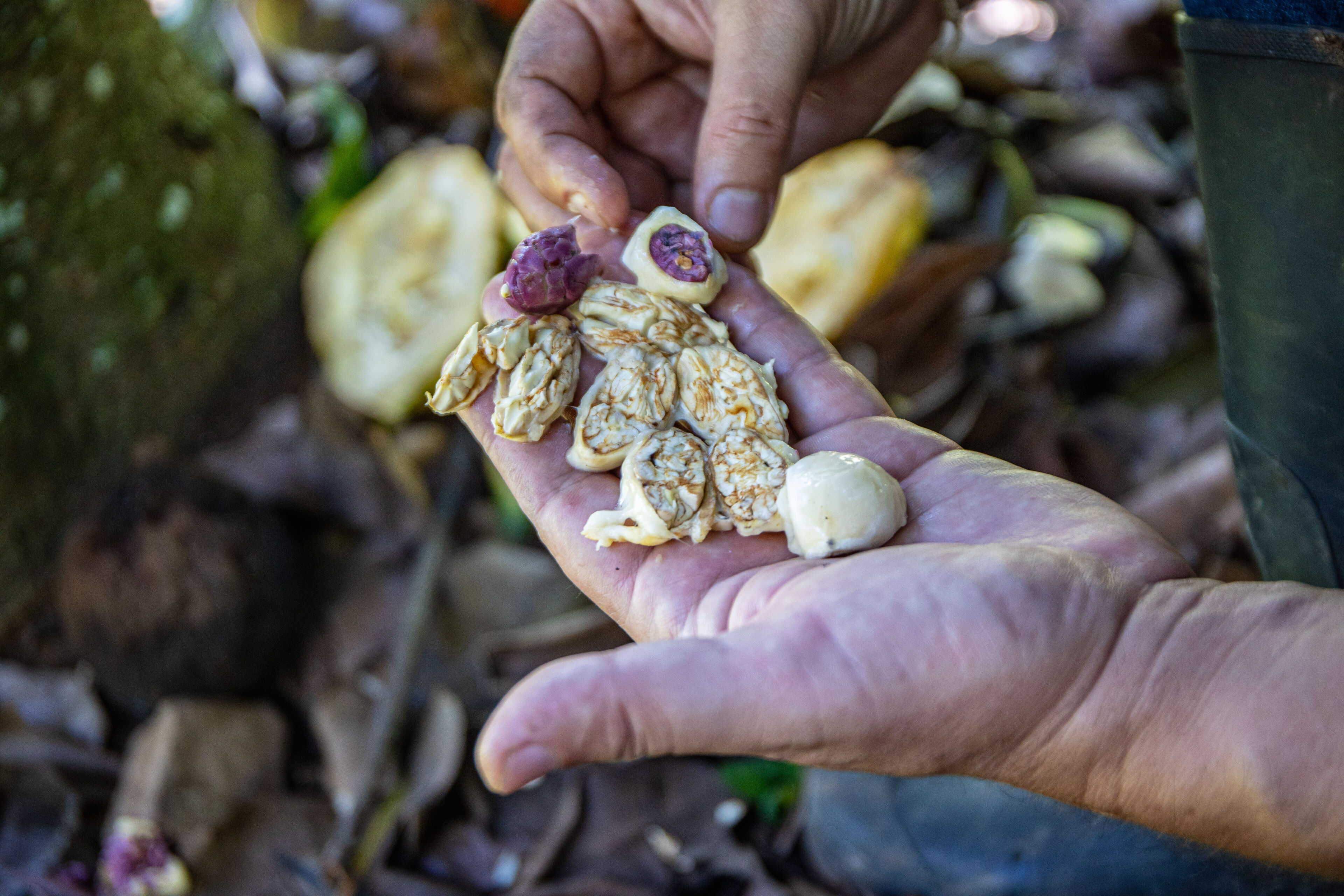
The "baba": a white, viscous, cottony pulp that coats the seeds and plays a major role in fermentation.
Salvadoran farmers, who have been working in cacao farming for over 8 years, are striving to implement precise and rigorous fermentation and drying processes in order to discover the complexity of their sensory profiles. For these farmers, the domestic market is becoming increasingly limited, and exports are becoming a new outlet.
Cacao production in Nicaragua is also influenced by European chocolatiers. Ritter Sport is one of Germany's biggest chocolatiers, and with 430,000 tonnes of cacao a year, Germany is Europe's second largest importer of cacao, just behind the Netherlands. Ritter exerts such a strong influence in Nicaragua's cacao industry that it sets the prices paid to producers, and this price is used as a reference by specialty cacao exporters, who base their prices on the price paid by Ritter for baba (unfermented cacao in its mucilage). We even hear talk of the "Ritter+..." price as a differential to value superior-quality cacao.
Much of the cacao of lesser quality is destined for the local market and for the Salvadorian market, which is in great demand.
The cacao transits to El Salvador via intermediaries, who are generally opportunists and are known as "acarreadores" on the local markets. The name refers to a species of coyote. Acarreadores sell cacao directly to tablilla manufacturers.
Some consume up to 15 tonnes a month, with the aim of producing affordable chocolate for the vast majority of the Salvadorian population, who live on the minimum wage and in a complicated economic reality.
BELCO & Salvadorian artisans
Thanks to the actions of Alianza Cacao and the growing number of Bean-to-bar artisans in El Salvador, a group of producers has begun to adopt more demanding practices in the production of fine cacao.
For Belco, these new practices represent a benchmark for quality, as we share the vision and demands of these producers.
In Europe, Belco works with players who want to be an integral part of the sourcing process, generally artisan chocolate makers who want to enhance the value of the chain, know the impact of their purchases, participate in a virtuous cycle of remunerating producers and support production practices that meet the challenges of preserving biodiversity.
These are fundamental aspects of our sourcing approach.
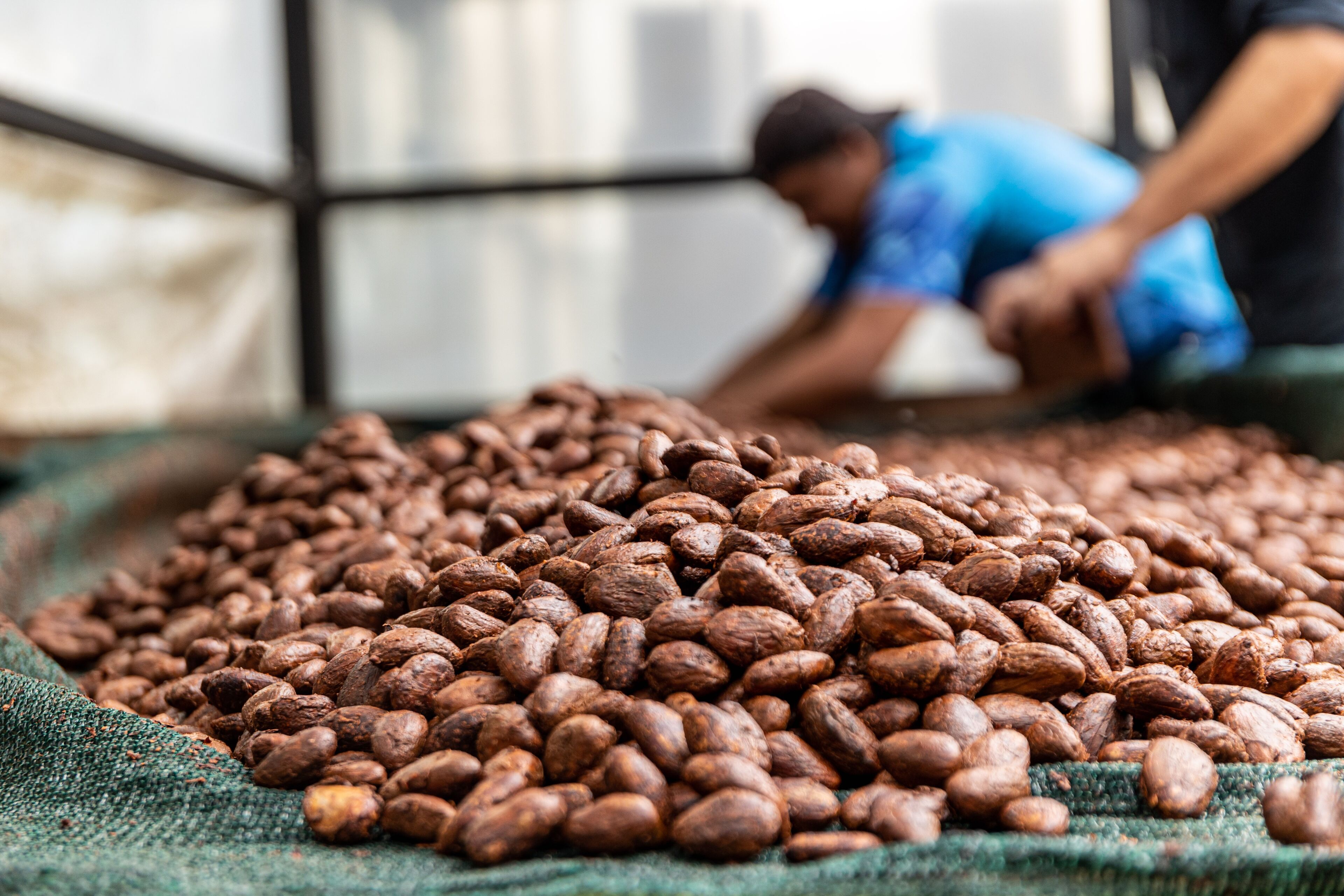
An example of the rigorous drying process at Elmer Martinez's farm in Morazàn, northwestern El Salvador. The beans are turned every half-hour to ensure even drying.
A few years ago, when we began our relationship with producers, we shared our quest for quality. We knew that there would be a period of adaptation and a need for continuous improvement. We have to build and develop together, producers and sourceur.
We succeeded in bringing these growers on board and created precise specifications coupled with numerous analyses (chemical residues, heavy metals, moisture content, mould, fermentation, physical defects), as well as impeccable packaging requirements for exporting the beans. Of course, these criteria make cacao production more complex, and we are well aware of this, which is why our purchase prices reflect this work. We pay 3 times more for these cacao beans than for "washed" cacao beans, i.e. those with little or no fermentation, which cost around €1.30/kg in Nicaragua, Honduras or even El Salvador.

Finca Copinol escondido
Clearly, there are many more cacao growers who produce for passion than for economic reasons. These producers find in Belco an ally to access new markets beyond the borders of El Salvador.
Our goal for 2023 is to source 25 tonnes of Salvadoran specialty cacao, while at the same time developing our sourcing in Colombia and gradually moving towards new origins.
Belco believes in the social economy, so we're working to open up the European market to Salvadoran producers, which will open up more sustainable options for their business model, enhance their quality and ensure that the efforts made to guarantee particular sensory profiles are appreciated by chocolatiers and consumers alike.
Thanks to long-term relationships, the benefits will accrue not only to the producers, but also to their neighboring communities, involving women and young people not only at harvest time, but throughout the year.
Paying a fair price for cacao, rather than a stock market price, makes it attractive and motivates the expansion of growing areas. We are the guarantors that these areas will be polycultured agroforestry productions, so that the environment too will see a significant benefit.
Did you like this article? Share it with your community:
